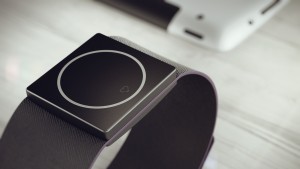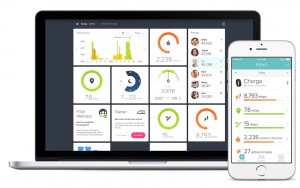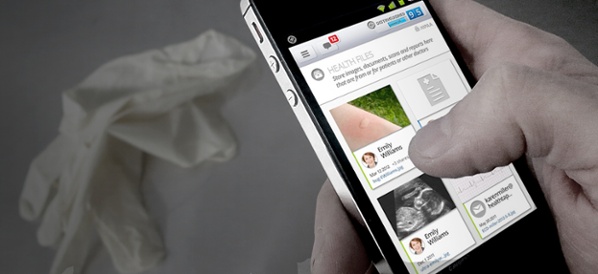Wearable medical devices and mobile health applications are one of the most popular topics in the medical device industry. Grouped within the mHealth category, these devices and related apps perform a variety of functions, from tracking daily exercise and recording food intake to monitoring vital signs and delivering data to healthcare professionals who provide remote diagnosis and treatment. Wearable mHealth products provide access to a platform through which consumers can immediately view and download information, giving them more control over their healthcare. This is not a trend that will eventually fade away, and the prevalence of wearable devices and mHealth applications is already disrupting the healthcare industry.
Technology heavyweights Apple, Samsung, Google, Sony and Lenovo continue to introduce new products and apps such as the Apple Watch, the Misfit Shine, and the Fitbit to the expanding wearable mHealth market. Beyond fitness trackers are wearables directly involved with informing healthcare decisions, such as:
-

The Empatica Embrace watch. Image courtesy of Empatica. Empatica’s Embrace smartwatch: Monitors epileptic seizures.
- Neumitra’s biowatch: Measures and manages brain health
- Imec’s smart ECG necklace: Detects heart arrhythmias
Embrace measures physiological signals such as sleep patterns, physical activity, and stress levels. But what differentiates the device from a wearable like Fitbit is that it goes one step further by being associated with a specific disease. Empatica states that Embrace can detect seizures and therefore saves the lives of people with epilepsy. The FDA considers this marketing verbiage a “claim,” indicating that the device treats or diagnoses a chronic disease or condition. This claim is why FDA is particularly interested in a device like Embrace as opposed to a product like the Fitbit.
FDA’s Draft Guidance on General Wellness and Low-Risk Devices
Earlier this year FDA released a draft guidance outlining its policy on assessing wellness products and how it makes the determination by defining general wellness and low risk. According to the document, General Wellness: Policy for Low Risk Devices, “general wellness products” can include video games, software programs, exercise equipment and audio recordings. FDA has devised a formula that companies can use to determine whether their product qualifies as a general wellness, low-risk device. This guidance well advises manufacturers on whether or not their product will be eyed by the agency and can potentially guide them on what type of device they are looking to develop. The guidance also informs manufacturers of the potential high risks of developing (and marketing) such a product. This guidance is a very important base of information, and there are many other factors to keep in mind, such as design requirements, safety, and end-user feedback, when developing these technologies.
What is General Wellness?
FDA defines overall general wellness products as those that are intended to promote or maintain general wellness, and present minimal or low risk to user safety. The agency has defined the parameters of general wellness products as fitting into one of two possible categories:
(1) An intended use that relates to maintaining or encouraging a general state of health or a healthy activity
or
(2) An intended use claim that associates the role of healthy lifestyle with helping to reduce the risk or impact of certain chronic diseases or conditions and where it is well understood and accepted that healthy lifestyle choices may play an important role in health outcomes for the disease or condition.

The main difference between these categories is that one singularly relates to overall general wellness, while the other relates to a specific chronic disease or disorder. In the first category, the “general state of health or healthy activity” includes physical fitness, weight management, relaxation or stress management, mental acuity, self-esteem (for example, a device that has a cosmetic function only making claims to impact self-esteem), sleep management, or sexual function. Products like the Fitbit encourage physical fitness by motivating users to become more physically active. Fitbit also tracks calories burned, maintains weight management, and tracks sleeping patterns, all of which fall into this first category. Products that claim to treat, diagnose, or restore structure/function impaired due to a disease, however, do not fall into this category.
For the second disease-related category, devices are further categorized into one of these two subcategories:
(1) Intended uses to promote, track, and/or encourage choice(s), which, as part of a healthy lifestyle, may help to reduce the risk of certain chronic diseases or conditions.
AND
(2) Intended uses to promote, track, and/or encourage choice(s) which, as part of a healthy lifestyle, may help living well with certain chronic diseases or conditions.
Neither category claims that the promotion or encouragement of certain choices will absolutely affect a certain chronic disease or condition. Instead, they say that they “may” or can potentially affect a disease or condition. The single difference between these two categories is that the first speaks to a person who does not already have the mentioned chronic disease or condition, whereas the second speaks to a person who already has the chronic disease or condition. Disease-related general wellness claims should come from an understanding and acceptance that the product lowers risks or has an effect on the chronic disease or condition specified. The draft guidance specifies diseases that the product may claim to lower risks for or have an impact on as: High blood pressure, type 2 diabetes and heart disease.
What Does Low Risk Mean?
If the wearable product falls into the first and/or second categories of “general wellness” within the FDA draft guidance, the device must meet an additional “low-risk” criterion before qualifying as a general wellness product. If the product is in some way invasive, involves an intervention or technology that may pose a risk to a user’s safety if controls are not provided (risk from lasers, radiation exposure, or implants), raises new questions about usability, or raises questions of biocompatibility, the device is not low risk. To illustrate this, the guidance uses as an example of a product that is intended to mechanically exfoliate the face, hands and feet to make the skin smoother and softer. Since this product’s claim does not refer to a specific disease or medical condition but instead addresses self-esteem, it can be considered a general wellness product. But is the product low risk? The answer is yes, because the product only exfoliates the face and is not considered “invasive” since it does not penetrate the outermost layer of the skin. However, if the product were to deliver a chemical that entered through that layer of skin, then it would be considered invasive and therefore would not be low risk.
Marketing Wearables and Making Claims

Peppered throughout the FDA draft guidance are the words “intended use” and “claims.” These can make or break a device in terms of whether the agency will consider the product to be a general wellness device. Manufacturers of wearable health devices and mobile health apps must carefully consider their messaging when developing marketing materials and ensure that they do not overstate their product’s capabilities. Companies should use this draft guidance as a tool to help bring new mHealth products to market. In addition, manufacturers will find it valuable to work with and receive feedback from design and human factors firms. Wearables and mHealth apps are being developed at a rapid pace, and usability plays a large part in the design of these digital applications. When wearables are developed that inform healthcare decisions and reach beyond the realm of “low risk,” safety becomes a factor in development and intended use.
What are some common questions that design firms receive from clients when developing wearable mHealth technologies?
|







